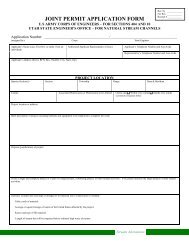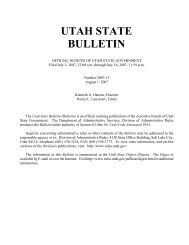Vol. 2010, No. 11 (06/01/2010) PDF - Administrative Rules - Utah.gov
Vol. 2010, No. 11 (06/01/2010) PDF - Administrative Rules - Utah.gov
Vol. 2010, No. 11 (06/01/2010) PDF - Administrative Rules - Utah.gov
You also want an ePaper? Increase the reach of your titles
YUMPU automatically turns print PDFs into web optimized ePapers that Google loves.
DAR File <strong>No</strong>. 33634<br />
NOTICES OF PROPOSED RULES<br />
(2) Recertification. The Director shall have the right to<br />
request a recertification by the contractor by submitting a written<br />
request to the contractor, and the contractor shall so comply with the<br />
written request within ten (10) working days of receipt of the<br />
written request; however, in no case may the contractor be required<br />
to demonstrate such compliance more than twice in any 12-month<br />
period.<br />
(3) Demonstrating Compliance with Actuarially<br />
Equivalent Determination. The actuarially equivalent<br />
determination required by Subsections 63A-5-205(1)(e)(i) and (iii)<br />
is met by the contractor if the contractor provides the Director with<br />
a written statement of actuarial equivalency from either the <strong>Utah</strong><br />
Insurance Department; [or ]an actuary selected by the contractor or<br />
the contractor's insurer; or an underwriter who is responsible for<br />
developing the employer group's premium rates.<br />
For purposes of this [Rule]Subsection R23-23-7(3),<br />
actuarially equivalency is achieved by meeting or exceeding any of<br />
the following:<br />
[(a) In accordance with Section 26-40-1<strong>06</strong>(2)(a), the<br />
largest insured commercial enrollment offered by a health<br />
maintenance organization in the State, which details of the plan are<br />
provided on the website of the Division at<br />
http://dfcm.utah.<strong>gov</strong>/downloads/Health%20Insurance<br />
%20Benchmark.pdf; or<br />
(b) provides coverage that is actuarially equivalent to 75<br />
percent of the benefit plan determined under Rule R23-23-7(3)(a)<br />
above and employer's premium contribution as required by statute.]<br />
(a) As delineated on the DFCM website at<br />
http://dfcm.utah.<strong>gov</strong>/downloads/Health%20Insurance<br />
%20Benchmark.pdf, a health benefit plan and employer<br />
contribution level with a combined actuarial value at least<br />
actuarially equivalent to the combined actuarial value of the<br />
benchmark plan determined by the Children's Health Insurance<br />
Program under Subsection 26-40-1<strong>06</strong>(2)(a), and a contribution level<br />
of 50% of the premium for the employee and the dependents of the<br />
employee who reside or work in the State, in which:<br />
(i) The employer pays at least 50% of the premium for<br />
the employee and the dependents of the employee who reside or<br />
work in the State; and<br />
(ii) for purposes of calculating actuarial equivalency<br />
under this Subsection R23-23-7(3)(a):<br />
(A) rather than the benchmark plan's deductible, and the<br />
benchmark plan's out-of-pocket maximum based on income levels,<br />
the deductible is $750 per individual and $2,250 per family; and the<br />
out-of-pocket maximum is $3,000 per individual and $9,000 per<br />
family;<br />
(B) dental coverage is not required; and<br />
(C) other than Subsection 26-40-1<strong>06</strong>(2)(a), the provisions<br />
of Section 26-40-1<strong>06</strong> do not apply; or<br />
(b)(i) is a federally qualified high deductible health plan<br />
that, at a minimum, has a deductible that is either;<br />
(A) the lowest deductible permitted for a federally<br />
qualified high deductible health plan; or<br />
(B) a deductible that is higher than the lowest deductible<br />
permitted for a federally qualified high deductible health plan, but<br />
includes an employer contribution to a health savings account in a<br />
dollar amount at least equal to the dollar amount difference between<br />
the lowest deductible permitted for a federally qualified high<br />
deductible plan and the deductible for the employer offered<br />
federally qualified high deductible plan;<br />
(ii) an out-of pocket maximum that does not exceed three<br />
times the amount of the annual deductible; and<br />
(iii) under which the employer pays 75% of the premium<br />
for the employee and the dependents of the employee who work or<br />
reside in the State.<br />
(4) The health insurance must be available upon the first<br />
day of the calendar month following the initial ninety (90) days<br />
from the [beginning of employment]date of hire.<br />
(5) Architect and Engineer Compliance Process.<br />
Architects and engineers that are subject to this Rule must<br />
demonstrate compliance with this Rule in any annual submittal<br />
under Section 63G-6-702. During the procurement process and no<br />
later than the execution of the contract with the architect or<br />
engineer, the architect or engineer shall confirm that their applicable<br />
subcontractors or subconsultants meet the requirements of this Rule.<br />
(6) General (Prime) Contractors Compliance Process.<br />
Contractors that are subject to this Rule must demonstrate<br />
compliance with this Rule for their own firm and any applicable<br />
subcontractors, in any pre-qualification process that may be used for<br />
the procurement. At the time of execution of the contract, the<br />
contractor shall confirm that their applicable subcontractors or<br />
subconsultants meet the requirements of this Rule.<br />
(7) <strong>No</strong>twithstanding any prequalification process, any<br />
contract subject to this Rule shall contain a provision requiring<br />
compliance with this Rule from the time of execution and<br />
throughout the duration of the contract.<br />
(8) Hearing and Penalties.<br />
(a) Hearing. Any hearing for any penalty under this Rule<br />
conducted by the Board or the Division shall be conducted in the<br />
same manner as any hearing required for a suspension or<br />
debarment.<br />
(b) Penalties that may be imposed by Board or Division.<br />
The penalties that may be imposed by the Board or the Division if a<br />
contractor, consultant, subcontractor or subconsultant, at any tier,<br />
intentionally violates the provisions of this Rule R23-23, may<br />
include:<br />
(i) a three-month suspension of the contractor or<br />
subcontractor from entering into future contracts with the State<br />
upon the first violation, regardless of which tier the contractor or<br />
subcontractor is involved with the future design and/or construction<br />
contract;<br />
(ii) a six-month suspension of the contractor or<br />
subcontractor from entering into future contracts with the State<br />
upon the second violation, regardless of which tier the contractor or<br />
subcontractor is involved with the future design and/or construction<br />
contract;<br />
(iii) an action for debarment of the contractor or<br />
subcontractor in accordance with Section 63G-6-804 upon the third<br />
or subsequent violation; and<br />
(iv) monetary penalties which may not exceed 50 percent<br />
of the amount necessary to purchase qualified health insurance<br />
coverage for an employee and the dependents of an employee of the<br />
contractor or subcontractor who was not offered qualified health<br />
insurance coverage during the duration of the contract.<br />
(c)(i) In addition to the penalties imposed above, a<br />
contractor, consultant, subcontractor or subconsultant who<br />
intentionally violates the provisions of this [R]rule shall be liable to<br />
UTAH STATE BULLETIN, June <strong>01</strong>, <strong>2<strong>01</strong>0</strong>, <strong>Vol</strong>. <strong>2<strong>01</strong>0</strong>, <strong>No</strong>. <strong>11</strong> 25


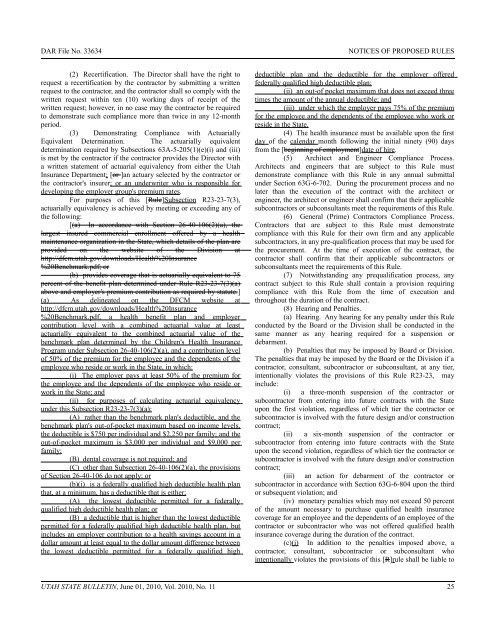
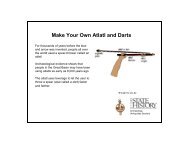

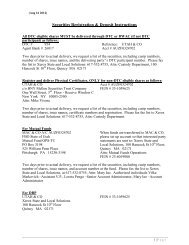
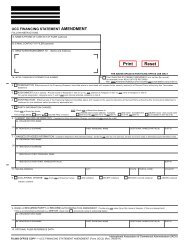
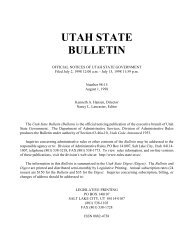
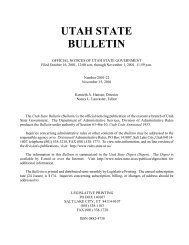

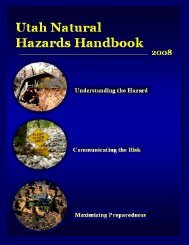

![Lynx avoidance [PDF] - Wisconsin Department of Natural Resources](https://img.yumpu.com/41279089/1/159x260/lynx-avoidance-pdf-wisconsin-department-of-natural-resources.jpg?quality=85)

